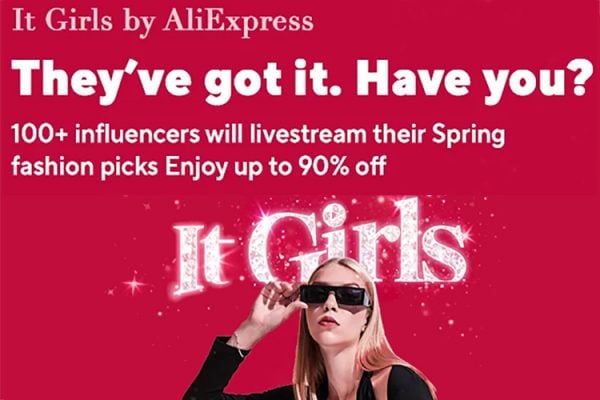Brands are taking over livestreaming in China, moving away from using influencers (key opinion leaders – KOLs) to ramp up their own livestreaming channels.
DVF, Helena Rubinstein and Swiss watchmaker Vacheron Constantine are among the global brands ramping up their own livestreaming channels to build a following, share niche products and shape consumer opinion reports Alibaba.
Brand-run streaming accounts are overtaking influencers as the biggest generators of gross merchandise value (GMV) for some ecommerce platforms. Retailers generated 60% of GMV on Alibaba Group’s consumer-to-consumer livestreaming ecommerce platform Taobao Live in the 12 months to September last year.
KOLs dominated China’s livestreaming industry from around 2016 to 2020 as they charmed viewers into buying products from brands that bought airtime. The advice was that if you wanted to sell in China then you must use KOLS but that’s no longer the case. As the pandemic decimated in-store shopping worldwide, brands trading in China woke up to the potential of livestreaming.
L’Oreal-owned Helena Rubinstein, one of the first to partner with KOLs on livestreams in 2019, launched its own channel after videos headlined by its staff netted roughly 10% of sales during 11.11, China’s largest shopping festival, in 2020.
That experience led us to believe brand-led livestreaming could be a huge opportunity for our e-commerce business.
– Austin Li, head of livestreaming in China, Helena Rubinstein
KOLs contributed about 40% of the beauty brand’s ecommerce business GMV in China but during the last 11.11, the brand started to do part of the livestreaming itself, reducing KOLs’ share to around 30%.
More than 100,000 brands hosted livestreams on Alibaba’s streaming platform Taobao Live during last year’s 11.11. Among these, 43 brands had their live stream-initiated GMV exceed RMB100 million ($15.8 million).
Investing in consumer education and building a following pays off. Viewers of brand-led livestreams are up to four times more likely to purchase goods, according to Tmall data, compared with users just browsing a brand’s store on the platform.










